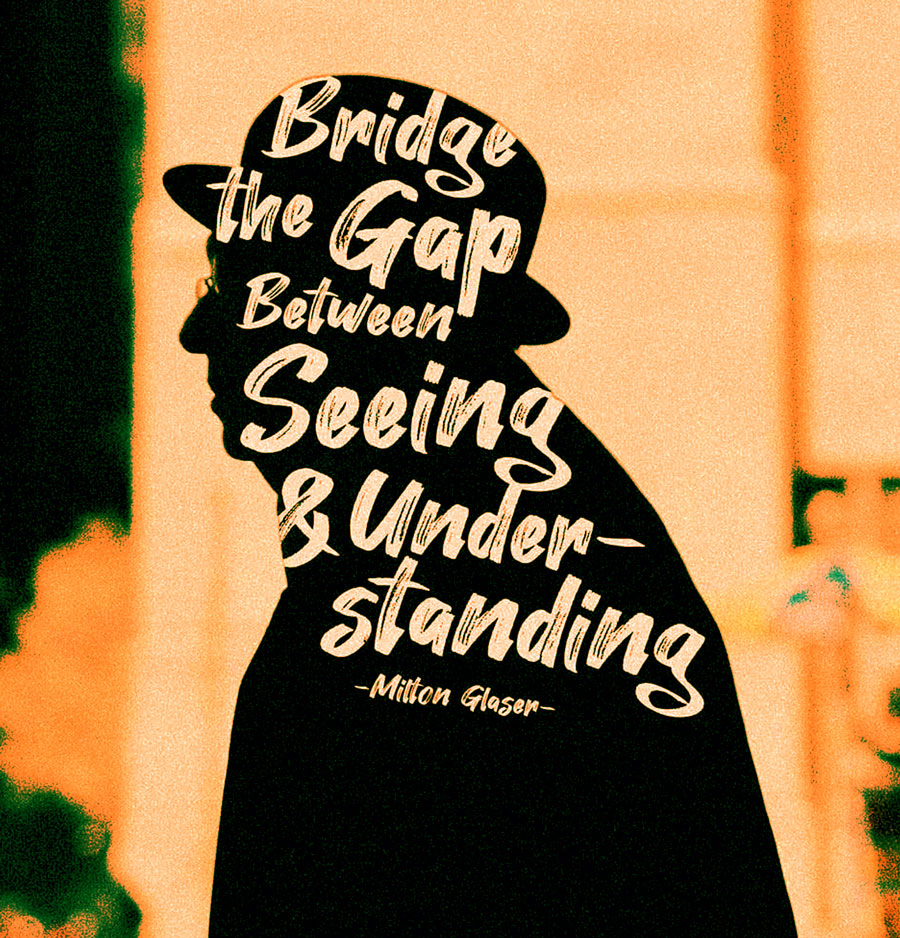My Philosophy in Design
Milton Glaser: renowned graphic designer, best known for his iconic “I ♥ NY” logo and his contributions to the world of visual communication. His design philosophy is a combination of artistic principles and a deep understanding of the power of visual imagery. To understand his philosophy it is necessary to outline a design philosophy that is reflective of his work and approach.
What is not to like about this graphic designer. Milton Glaser’s Design Philosophy embraces everything I love about design :
- Simplicity and Clarity: Glaser believed that great design should be simple and clear. He often used minimalistic elements that conveyed a message or an idea with precision. He understood that clarity in design is essential for effective communication.
- Storytelling through Visuals: Visual communication is a powerful tool, and Glaser was a master at using it to tell stories. He believed that visuals can convey emotions, narratives, and ideas in ways that words alone cannot.
- Originality and Innovation: Glaser encouraged designers to think outside the box. He emphasized the importance of originality in design, pushing boundaries, and embracing innovation. His work often showcased his ability to bring fresh perspectives to familiar concepts.
- Timelessness: Many of Glaser’s designs have stood the test of time. He believed that good design should be timeless and avoid fleeting trends. His “I ♥ NY” logo, for instance, remains relevant and impactful decades after its creation.
- Embracing the Unexpected: Glaser encouraged designers to embrace serendipity and the unexpected. He often incorporated elements of surprise or humor in his work, engaging the viewer’s curiosity and making the design more memorable.
- Cultural Relevance: Glaser’s work often reflected and responded to the cultural and societal context of his time. He understood the importance of a design’s context and how it relates to the world in which it exists.
- Craftsmanship and Attention to Detail: Glaser was known for his meticulous attention to detail and craftsmanship. He believed that the quality of execution was as important as the concept itself.
- Problem Solving: Design, for Glaser, was about solving problems. Whether it was conveying a message, promoting a brand, or expressing an idea, he saw design as a solution to a specific challenge.
- Ethical Responsibility: Glaser believed that designers had an ethical responsibility to use their skills for good. He was involved in various social and political causes, and his work often reflected a commitment to positive change.
- Continuous Learning and Adaptation: Design is an evolving field, and Glaser understood the importance of continuous learning and adaptation. He embraced new technologies and techniques throughout his career.
These are general principles that reflect Milton Glaser’s approach to design and very much influence my work as a budding designer. It is good to learn from those who have gone before us.
Image of Milton Glaser https://www.canva.com/learn/famous-graphic-designers/
Some of my other design influences:
David Carson: Breaks the Rules – known for his Grunge style, sometimes illegible layout, using textures – constantly inspiring me as a designer.
Saul Bass: known for his movie posters and logo designs
Alan Fletcher: expressive typography, bold colours with a strong visual language. I love the idea of using type to express ideas.
Andy Warhol & Roy Lichtenstein: New York pop artists of the 1960’s. Using familiar objects from popular culture to produce mass commercial items – Remember Campbell’s Soup Cans. Check out my pop art on my website – it celebrates my kids as fine art.

